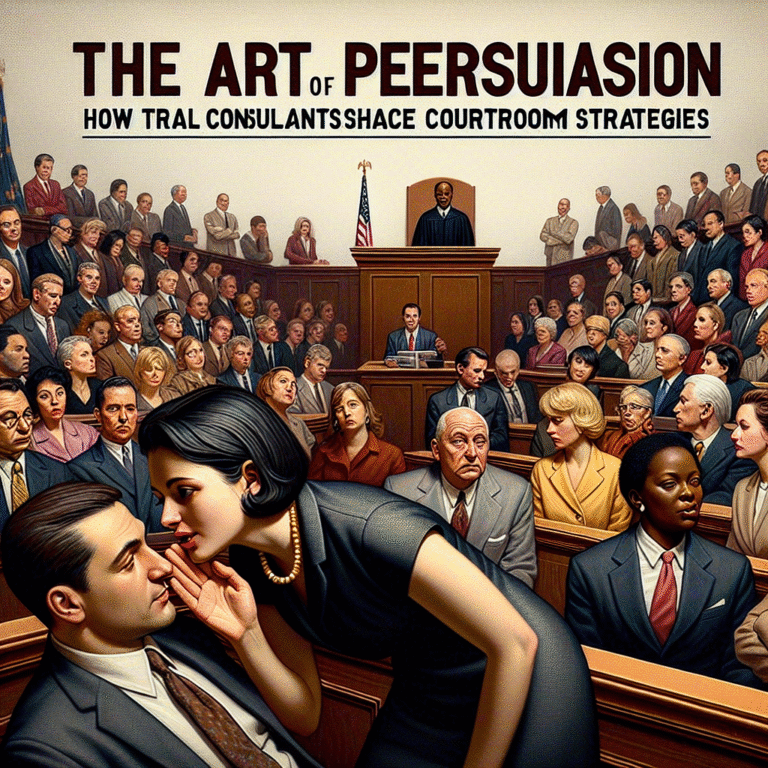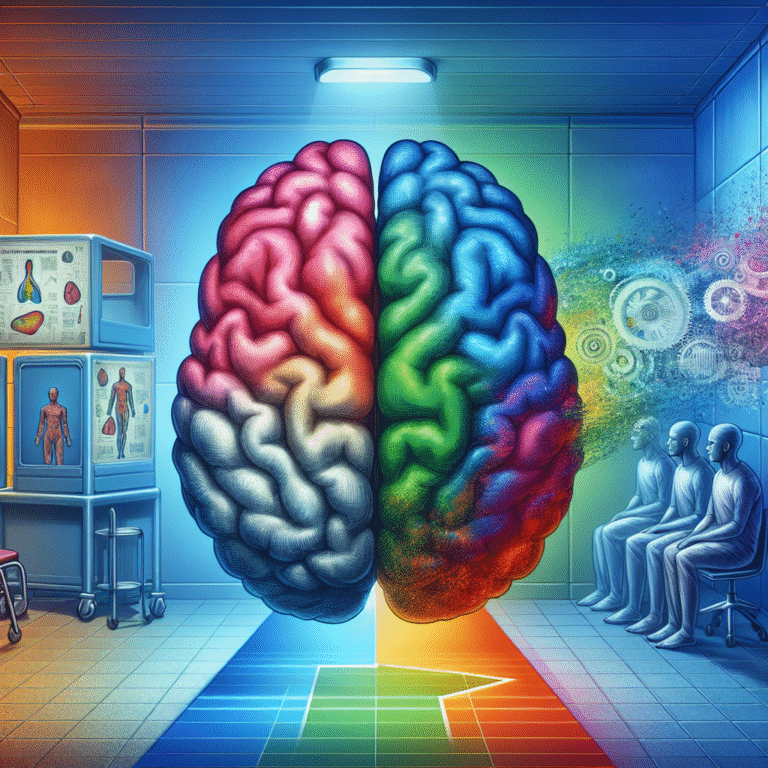Introduction
Imagine a world where understanding the mind’s complexities could revolutionize how we approach criminal justice. Picture a courtroom where decisions are informed not just by testimony but by scientific evidence derived from our very brain. This is no longer just a sci-fi fantasy; this is the promising reality of "Decoding Criminal Intent: The Impact of Neuroimaging in Forensic Science." With the advent of neuroimaging technologies, the landscape of forensic science is changing dramatically. By bridging the gap between psychology and neuroscience, we are uncovering new dimensions in criminal intent that were once deemed unfathomable.
Understanding Criminal Intent
What Is Criminal Intent?
Before diving into neuroimaging, it’s crucial to understand what criminal intent means. Criminal intent refers to the mental state of a person during the commission of a crime. It plays a vital role in distinguishing between different degrees of culpability.
- Specific Intent: The individual has a purpose to commit a specific crime.
- General Intent: The person intended to commit the act regardless of the outcome.
Importance in Legal Context
In legal contexts, establishing criminal intent can be the determining factor in the outcome of a trial. Without clear evidence of intent, defendants may walk free, posing risks to society. Neuroimaging offers a fresh perspective on how we can interpret these mental states better.
Traditional Methods of Assessing Intent
Traditionally, criminal intent has been assessed through:
- Witness Testimony: Eyewitness accounts may be inconsistent.
- Behavioral Analysis: Assessing body language and actions during the crime.
While these methods have their place, they often lack the precision needed in complex cases. Enter neuroimaging.
The Rise of Neuroimaging in Forensic Science
What is Neuroimaging?
Neuroimaging involves various techniques that visualize the brain’s structure and function. Key technologies include:
- Functional Magnetic Resonance Imaging (fMRI): Measures brain activity by detecting changes in blood flow.
- Positron Emission Tomography (PET): Provides insights into metabolic processes in the brain.
- Electroencephalography (EEG): Assesses electrical activity in the brain through electrodes on the scalp.
How Neuroimaging Works
Neuroimaging allows researchers to observe the brain’s response to various stimuli, enabling a deeper understanding of intent. While it doesn’t provide a "read-out" of thoughts, it can show which areas of the brain are activated during specific mental processes.
Case Study 1: The "Brain Fingerprint"
In a remarkable case, neuroscientist Dr. Lawrence Farwell developed a technique known as the "brain fingerprinting." Using EEG and neuroimaging, he was able to identify specific brain responses to crime-related stimuli, indicating whether an individual had prior knowledge of the crime scene. In a notable case, this technology exonerated a man wrongfully accused of murder, showcasing its impact in establishing intent—or lack thereof.
Analysis
This case underlines the potential of neuroimaging as a powerful tool in criminal justice. By capturing nuanced brain responses, it provides evidence that transcends verbal testimonies, thereby strengthening legal arguments.
Neuroimaging and Its Role in Assessing Criminal Intent
New Avenues for Understanding Intent
Neuroimaging technologies have enabled forensic scientists to gather data that might have been unavailable previously. For instance:
- Brain Areas Linked to Aggression: Studies indicate specific regions associated with aggressive behavior, providing insight into the potential for violent crimes.
- Decision-Making Processes: Research shows how decisions that lead to criminal actions are formed in the brain, often within the prefrontal cortex.
The Role of Neuroscience in Forensic Psychology
Neuroscience and psychology are increasingly becoming intertwined. As we decode criminal intent, understanding how neuroimaging can reveal the psychological state of the accused is crucial.
Case Study 2: The Neuroscience of Psychopathy
In a groundbreaking study, researchers utilized fMRI to investigate the neural mechanisms of psychopathy. The imaging showed decreased activity in the amygdala—a region involved in emotional processing—among participants diagnosed with psychopathy. This awareness can help legal systems in understanding the mindset of patients, particularly in assessing intent to commit harm.
Analysis
This case emphasizes a critical ethical dimension. Understanding brain differences enables a potentially more humane treatment approach and may influence sentencing, but it raises questions about accountability.
Neuroimaging Techniques: Pros and Cons
As we explore neuroimaging, it is vital to weigh the advantages and limitations:
Pros
- Objective Data: Offers quantifiable results to support subjective testimonies.
- Enhanced Understanding: Provides insights into decision-making processes and emotional states.
- Exoneration Opportunities: Can help free wrongfully accused individuals through definitive evidence.
Cons
- Interpretation Challenges: Results can be misinterpreted without proper context.
- Ethical Concerns: The implications of labeling individuals based on brain patterns can have negative societal effects.
- Accessibility and Cost: Not all jurisdictions can afford advanced neuroimaging technology.
Advances in Neuroimaging Research
Recent Developments
The growth of neuroimaging technology is constant and evolving. Recent research explores areas such as:
- Machine Learning: Algorithms are increasingly being trained to interpret neuroimaging data and predict criminal behavior.
- Cross-Disciplinary Studies: Collaborations between neuroscientists, psychologists, and legal scholars are generating new insights.
Future Directions
The future of neuroimaging in forensic science is promising yet fraught with challenges. Ongoing studies aim to refine techniques to lower costs and improve accuracy.
Table 1: Current and Future Neuroimaging Techniques
| Technique | Current Use Case | Future Potential |
|---|---|---|
| fMRI | Assessing activity levels | Real-time monitoring |
| EEG | Detecting emotional responses | Enhanced crime prediction |
| PET | Identifying metabolic processes | Understanding intentions |
Ethical Considerations
The Ethical Dilemma
As we decode criminal intent, ethical implications cannot be overlooked. The possibility of classifying individuals based on neural activity raises significant concerns. Questions about free will, personal responsibility, and societal implications come into play.
The Role of Advocacy
Legal advocates and ethicists are increasingly involved in discussions about how to ethically apply neuroimaging findings. It is essential to maintain a balance between scientific advancement and the rights of individuals.
Conclusion
Decoding Criminal Intent: The Impact of Neuroimaging in Forensic Science represents a captivating intersection between science and the law. As technology continues to advance, the ways we understand and assess criminal behavior will inevitably transform. With neuroimaging offering new avenues for investigating intent, the potential for justice is not only more informed but also more humane.
Inspiring Takeaway
As we navigate this new landscape, it is crucial to remember that technology should serve as a tool for understanding, not a replacement for human judgment. The future of forensic science and criminal justice lies in integrating these insights with empathy and ethical considerations.
FAQs
1. How does neuroimaging help in court cases?
Neuroimaging provides objective data that can offer insights into a defendant’s mental state during a crime, aiding in establishing or refuting criminal intent.
2. Is neuroimaging always accurate?
While neuroimaging has advanced considerably, it is not infallible. Interpretation requires expertise and context to avoid misjudgment.
3. What are the ethical concerns related to neuroimaging?
Ethical concerns include the potential to undermine personal responsibility and the risks of labeling individuals based on brain patterns.
4. Can neuroimaging be used in all cases?
Not all jurisdictions have access to neuroimaging technologies, and their applicability may vary based on jurisdictional laws.
5. What is the future of neuroimaging in forensic science?
Future developments may lead to more accessible, real-time monitoring techniques that can greatly enhance our understanding of criminal behavior and intent.
By exploring "Decoding Criminal Intent: The Impact of Neuroimaging in Forensic Science," we uncover the vital role neuroscience plays in understanding criminal behavior. Together, we can forge a path toward a more just society, reliant on facts and empathy.















